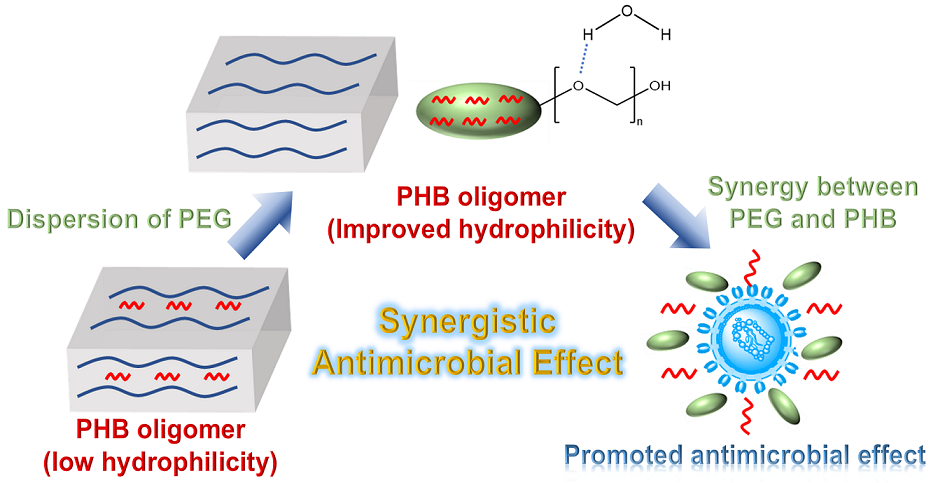We reported previously that poly (3-hydroxybutyrate) (PHB) oligomer is an effective antimicrobial agent against gram-positive bacteria, gram-negative bacteria, fungi and multi-drug resistant bacteria. In this work, it was further found that polyethylene glycol (PEG) can promote the antimicrobial effect of PHB oligomer synergistically. Three hypothetic mechanisms were proposed, that is, generation of new antimicrobial components, degradation of PHB macromolecules and dissolution/dispersion of PHB oligomer by PEG. With a series of systematic experiments and characterizations of HPLC-MS, it was deducted that dissolution/dispersion of PHB oligomer dominated the synergistic antimicrobial effect between PHB oligomer and PEG. This work demonstrates a way for promoting antimicrobial effect of PHB oligomer and other antimicrobial agents through improving hydrophilicity.

